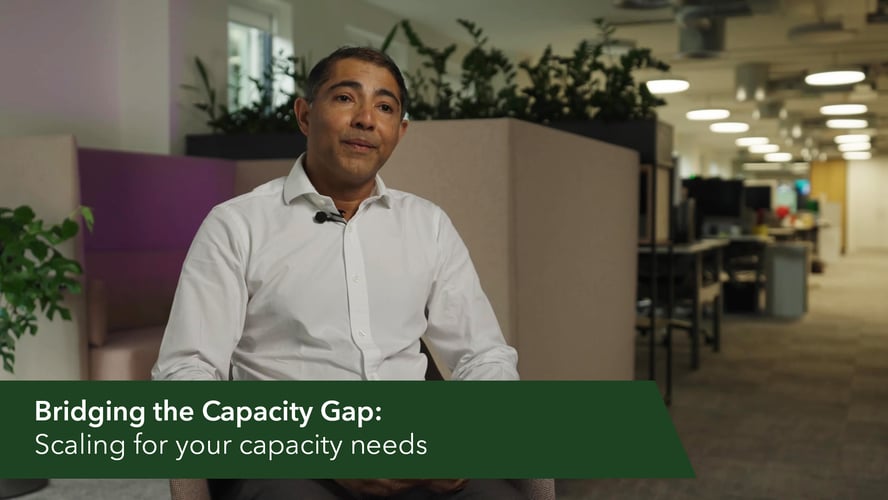Beyond Megawatts: Rethinking the Data Centre Energy Strategy

As the digital economy accelerates, the expansion of hyperscale data centres is colliding with the limitations of local power grids. Across the globe, from Dublin to Dubai to Dallas, the rapid increase in data centre energy consumption is pushing utilities to their limits, creating both operational and strategic challenges for developers and operators to cater for the demand in digital infrastructure.
Energy Demand vs Grid Capacity
Data centres are among the most energy-intensive facilities in the world. The optimal approach to mitigating risk would suggest that smarter site selection can mitigate some of these constraints, emphasizing proximity to reliable power sources and renewable energy options. However, even regions with robust renewable strategies face difficulties when multiple large-scale data centres draw heavily from limited grid infrastructure.
In the United States, as well as parts of EMEA and APAC this systemic pressure on electricity markets has led to our industry being cast in negative light from some sections of the media, who happily take to social media to in an attempt to highlight this issue, thus further increasing reliance on data centres…
While traditional utility models struggle to accommodate the unpredictable and surging demand from large data centre clusters, leading to localized grid stress, higher electricity costs, and potential delays in facility commissioning the question now is will the industry start to embrace un-traditional and innovative models of power generation to address the shortfall from utility providers?
The collision of data centre demand and grid capacity isn’t a uniform challenge — it plays out differently across geographies. But common strategies are emerging that can help the industry stay ahead.
1. Location Intelligence
Smarter site selection is now a non-negotiable. As Schneider Electric highlights, operators are increasingly prioritizing power availability and renewable potential in their decision-making. This means going beyond fiber access and land cost to evaluate grid headroom, transmission constraints, and renewable proximity.
- In Ireland for example, the grid is already under intense strain, forcing regulators to pause or restrict new data centre connections in certain areas. This shows the risks of clustering in regions with limited grid capacity.
- Conversely, regions with surplus generation — such as U.S. states with significant solar and wind build-out — present opportunities to align data centre demand with underutilized renewable resources.
- Schneider Electric further argues that predictive modeling of power markets can reduce the risk of stranded investments by ensuring facilities are aligned with long-term energy growth corridors.
2. On-site Generation and Storage
Self-generation and storage are rapidly moving from “nice-to-have” to “mission-critical.”
- In the U.S, soaring demand from data centres is already challenging grid reliability. Operators are responding by investing in large-scale Battery Energy Storage Systems (BESS) to smooth peak demand and reduce dependency on congested grids.
- CHP (combined heat and power) and renewable integration are also gaining traction. Ireland’s growing renewable base (wind and solar) creates potential for direct procurement and co-location models, even if grid transmission is lagging.
- Globally, pilot projects using hydrogen fuel cells as backup are testing ways to eliminate diesel while adding resilience. This hybrid approach allows data centres to keep growing even when utilities cannot expand capacity at the same pace.
3. Grid Collaboration
Perhaps the most critical shift is how data centres are engaging with utilities and policymakers.
- In Ireland, regulators and grid operators have already tightened approval rules for new builds, effectively forcing developers into closer alignment with national energy strategies. This has turned grid collaboration from an optional exercise into a license-to-operate.
- In the U.S. coordinated planning between hyperscale operators and utilities is essential, given the multi-gigawatt demands often materialize faster than transmission projects can be built.
- Schneider Electric also emphasizes grid-flexible design, where data centres act as controllable loads — for example, shifting non-critical compute to off-peak hours or supporting grid stability during peak demand. This collaboration reduces the risk of blackouts and builds trust with regulators.
- In some markets, hyperscalers are co-investing in substations and renewable projects to accelerate capacity readiness, securing long-term reliability while supporting broader grid resilience.
Implications for Industry Leaders
Fundamentally, power constraints are no longer back-end engineering challenges, they are boardroom-level blockers. The availability, cost, and reliability of energy now directly shape the viability of expansion projects, the competitiveness of bids, and the trust built with hyperscale clients.
Site Viability and Speed-to-Market: In markets like Ireland, where new data centre connections are restricted, projects risk delays or outright cancellation if power is not secured early. For global firms like BGO DC, this means factoring grid constraints into client conversations from day one. A site without guaranteed power is no longer a “future-ready” option, regardless of its fiber routes or land cost advantages.
Operational Costs and Risk Exposure: Rising energy demand coupled with constrained supply often leads to higher wholesale electricity prices, as seen in U.S. markets. This directly impacts operating margins and long-term total cost of ownership (TCO). Leaders must consider how location intelligence and renewable procurement strategies can insulate clients from volatile power markets.
Scalability and Client Confidence: Hyperscale clients demand multi-phase growth with predictable energy access. Without certainty on power scalability, operators risk losing credibility and pipeline opportunities. The firms that can guarantee energy pathways, through grid collaboration, on-site solutions, or strategic co-investment, will secure stronger, longer-term partnerships.
Reputation and ESG Alignment: Energy availability is also an ESG issue. Clients increasingly require renewable-backed power for their facilities. Demonstrating the ability to deliver clean, reliable energy is not just about capacity, but also sustainability and compliance.
Shifting from Reactive to Proactive Strategy: Historically, utilities determined power availability, and developers reacted. Today, industry leaders must co-create energy solutions — anticipating bottlenecks, influencing regulatory frameworks, and exploring non-traditional models such as microgrids, hydrogen pilots, or co-financed transmission upgrades.
Looking Forward
The convergence of hyperscale computing demand and global grid limitations represents a turning point for the data centre industry. Energy is no longer a background consideration but a decisive factor in where and how growth happens.
Companies that weave energy strategy into the heart of their expansion plans through smarter site selection, investment in on-site generation, and deeper collaboration with utilities, local authorities and clients will not only reduce risk but also strengthen their competitive edge.
The path ahead will reward those who view power not as a constraint but as an opportunity to innovate, differentiate, and lead the sector into a more resilient and sustainable future.


